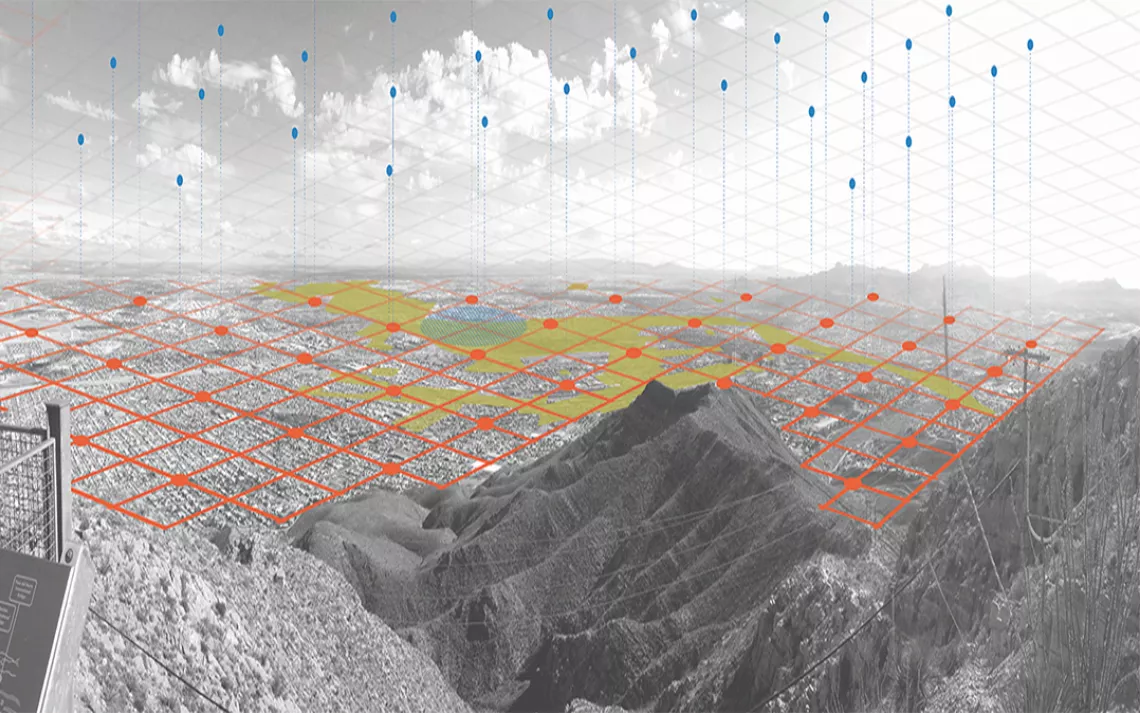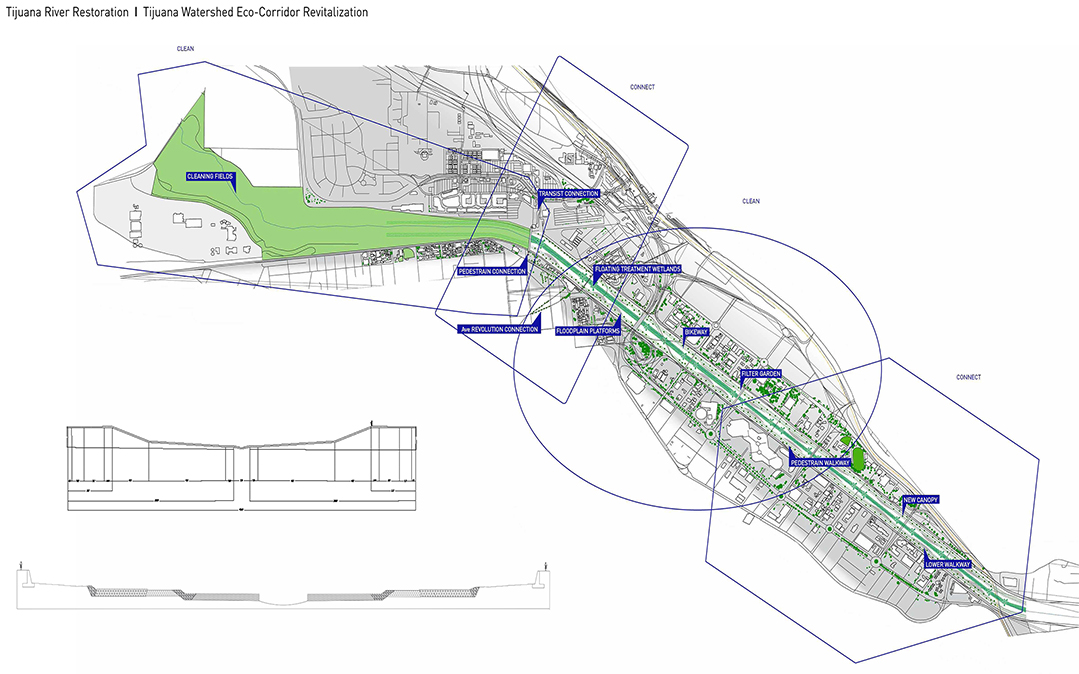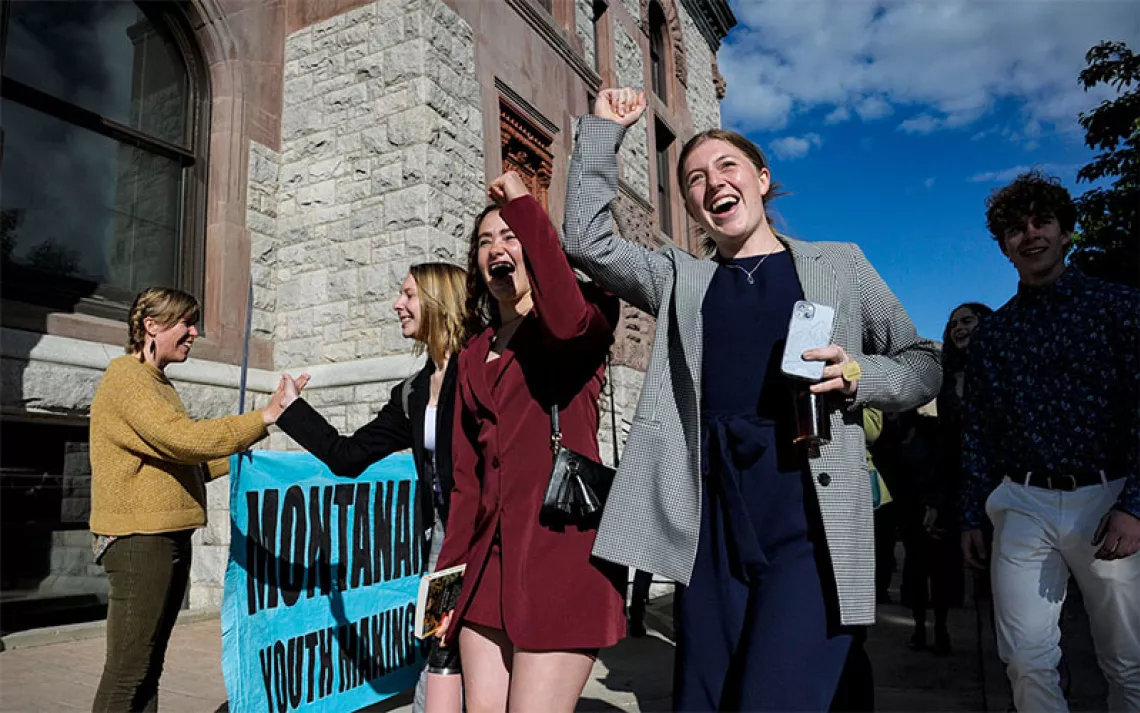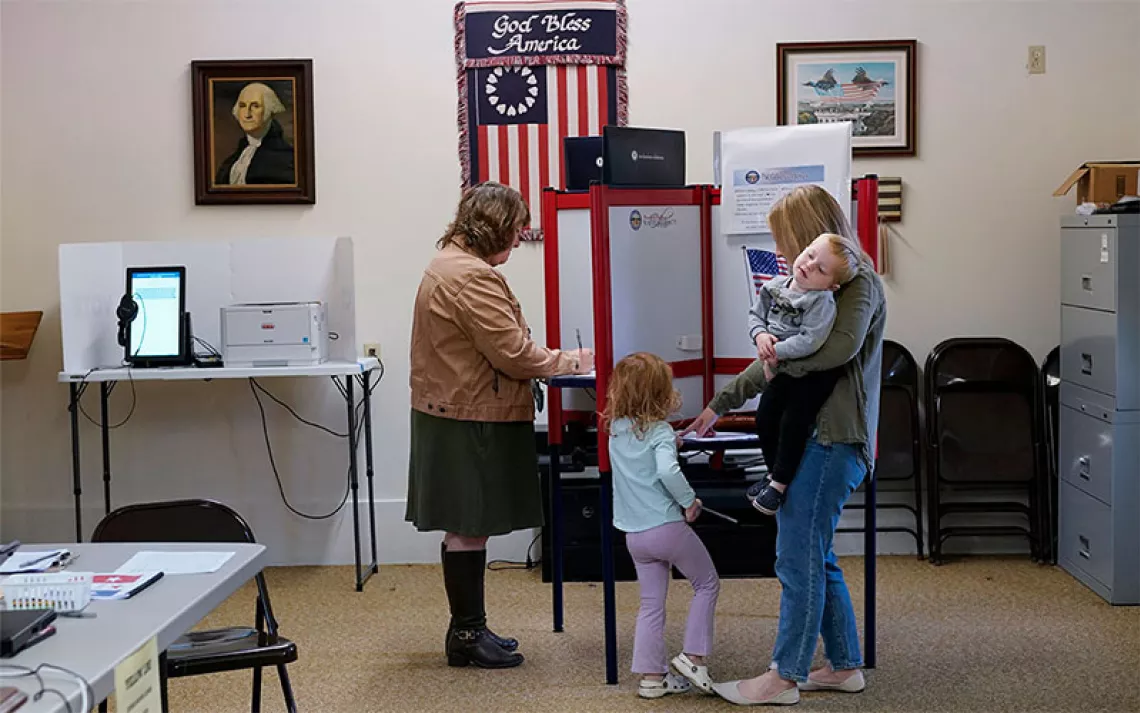Envisioning a Border Without Walls
There's a better, greener way to have safe and secure borders

Images courtesy of professor Fernando Lara
If President Donald Trump succeeds in building a “great, great wall along the southern border,” as he again promised in his joint address to Congress last week, it will be an environmental and human disaster. Should the federal government extend Bush-era sections of walls and fencing already in place along the U.S.-Mexico border, it will fragment vital habitat, blight pristine natural areas, run the risk of severe flooding, and further militarize a border region home to some 15 million inhabitants on both sides.
No one disputes the notion that a country should have safe and secure borders. But Trump’s “great wall” isn’t the only solution. There is a better way.
A binational collaboration of architecture students at the University of Texas at Austin and the Universidad Autónoma de Nuevo León in Monterrey, Mexico, teamed up last summer to prove that borders can exist without walls. “As the Trump campaign began talking about building a wall and the mass deportation of undocumented immigrants, I decided to take it as a challenge for my students,” says UT architecture professor Fernando Lara, a native of Brazil. “I proposed to the students to draw the infrastructure necessary for people to cross freely, just as goods cross freely. What would we need to design and build for the border with Mexico to be just like the border between Germany or France, or Brazil and Uruguay?”
As part of Lara’s upper-division studio class, students attended lectures by experts in fields including transportation, sociology, law, and criminal justice. They also completed a series of conceptual exercises, which included building—and living with—a wall in their own apartments for a week. “We really took the approach of starting very abstractly, thinking about what the concept of a border actually means,” says graduate student Evan Todtz, who with his roommates built a wall of bungee cords and red, white, and green T-shirts in homage to the Mexican flag. “It was a pain; it was stressful, like crossing the real border.”
Eventually, the students divided into groups and selected a pair of border communities for which to create a design. Todtz’s group drew a blueprint for a binational environmental education campus in El Paso/Juarez that repurposed outmoded maquiladora factories and connected residents from both sides through public transit. “Border security happens the second you hit your fare box at the station,” Todtz says. “The idea is that over time these industrial parks become actual parks.”

Lara encouraged students to consider sustainability in their designs through the creation of green public spaces and integration of public transport. For fourth-year undergraduate Ashley Chung, who worked on a design for Del Rio/Ciudad Acuña, that meant designing a flood control system and underground vehicular tunnel, so that an existing floodplain could become a binational, pedestrian-friendly museum and gathering space. “Rather than making the border a wall, I wanted to create a space on the border that calls attention to the fact that the river is a link that is shared,” she says.
Another group designed a San Diego/Tijuana to Brownsville/Matamoros high-speed train network. The projected cost of about $25 billion turned out to be almost the same as Trump’s proposed wall. “Instead of building a wall, you build a high-speed train,” suggests Lara.
As they developed their projects, the students took the challenges of border security seriously, even as they sought less onerous ways to implement it. One project in Laredo/Nuevo Laredo, where air pollution from idling cars at the international bridge is a pressing problem, proposed separating drivers from their vehicles, which would travel through scanners on a giant conveyor belt, much like carry-on luggage at the airport. “This technology already exists,” Lara points out. “Those scanners cost $200,000 each—it’s a fraction of the budget for militarization.”
Over the course of the semester, the UT students held weekly Skype sessions with their colleagues in Monterrey, some of whom traveled to Austin for the UT final presentations. “For us, it has been a great collaborative experience,” says UANL architecture professor Diana Maldonado. “We need to think together about how to have real dialogue, to not be afraid of one another. In the end, we are the same—the same landscape, weather, people. We have a lot of things in common that we need to develop.” This spring semester, the Monterrey students are in the process of developing their own proposals, and Maldonado hopes that the project will continue in future years, potentially expanding to include students from other universities in the border region.
The election happened just after the UT students had turned in the first drafts of their proposals. When they attended class the next day, “All of us cried, including me,” Lara says. “We were devastated.” Still, Lara believes that the current political climate makes idealistic projects like his students’ take on greater significance. “These ideas are even more important now, because we need to steer the conversation away from fear and threats, and talk about opportunities. It’s fundamental to have an agenda that is positive and celebratory of the border’s potential.”
“People are often afraid to invest too much time or energy talking about things that could never happen,” adds Todtz. “But these sorts of utopian visions are an opportunity and a space for us to question why we do what we do, and how we can do it better. They allow us to have larger conversations about the border, and how these border communities depend on one another.”
What You Can Do
Tell Congress not to waste billions on border walls: The Sierra Club stands in total solidarity with immigrants, communities of color, Muslims, women, and all those who may be threatened under a Trump administration. The struggles to protect our communities and our environment cannot be separated. Everyone who values the principles of liberty, freedom, and justice should continue to resist these attacks—including this proposed border wall.
Tell Congress to refuse to appropriate the money for this new, awful border wall.
 The Magazine of The Sierra Club
The Magazine of The Sierra Club







